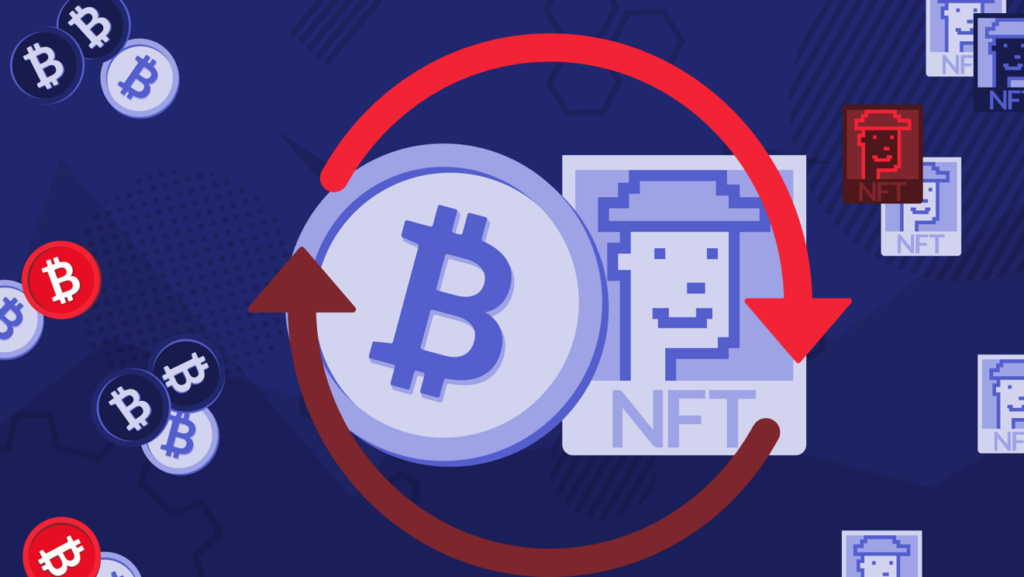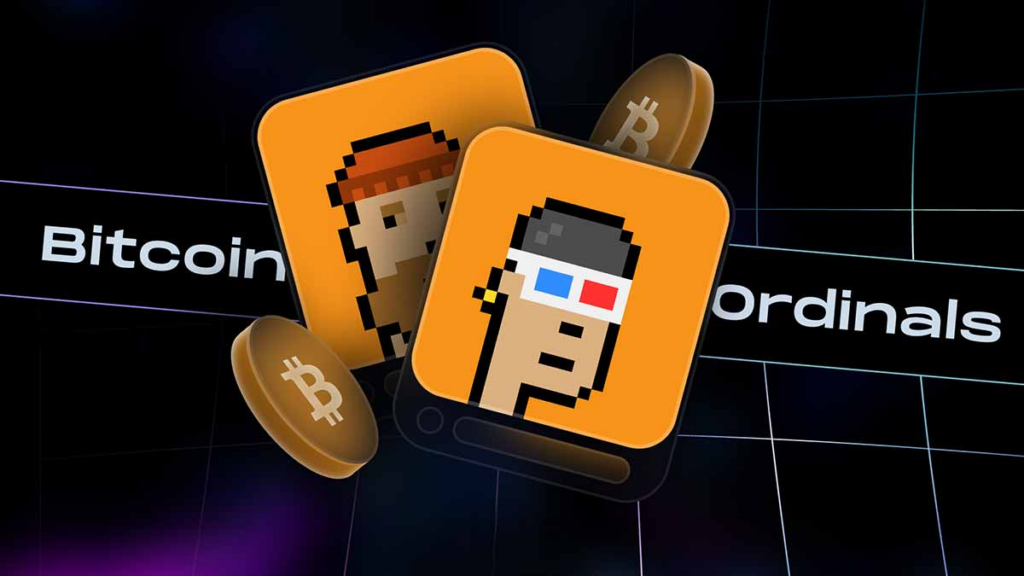What is Bitcoin Ordinals?
Bitcoin Ordinals is a unique mechanism in the cryptocurrency world that allows users to attach data, such as images or text, to the smallest unit of Bitcoin, called a satoshi. From there, users can create a unique digital asset, called Non-Fungible Token (NFT), on the Bitcoin network.
The Bitcoin Ordinals technology was developed by Casey Rodarmor, a member of the Bitcoin development team. To add NFT features to the Bitcoin network, Bitcoin Ordinals has brought a new wind to Bitcoin users and created a new generation Rollup solution on the platform.

How Bitcoin Ordinals Work
Bitcoin Ordinals work by attaching data to a satoshi unit, the smallest currency in the Bitcoin network. Each Bitcoin is divided into 100,000,000 satoshis, and users can use several satoshis to create an NFT. This gives the possibility to mint up to 100 million NFTs per Bitcoin.
With Bitcoin Ordinals, NFTs can be traded, converted, and operated on the Bitcoin network without the support of Layer 2 solutions. This increases the flexibility and convenience for Bitcoin users to create, manage, and trade unique digital assets.

The Potential of Bitcoin Ordinals
Bitcoin Ordinals brings many important potentials to the Bitcoin network and its users:
Bitcoin Ordinals attract cash flow to Bitcoin and other coins in the network. The increase in interest and activity with Bitcoin Ordinals has created significant growth in the value of many coins, for example, STX coin (Stacks) has tripled since Bitcoin Ordinals was launched.
Bitcoin Ordinals have created a wave of NFT transactions on the Bitcoin network. This helps to expand and diversify Bitcoin’s ecosystem, attracting the interest of other potential developers, artists, and users. The creation and trading of NFTs on Bitcoin increase the creativity and value of the network while creating new business opportunities for individuals and businesses.

Benefits to Bitcoin Miners: With Bitcoin Ordinals, Bitcoin miners can take advantage of higher Bitcoin mining performance. Mining and attaching data to satoshi units creates an increase in mining activity and increases the profitability of miners. This could fuel an increase in network mining capacity and at the same time increase the security of the Bitcoin network.
Increased Application for Bitcoin: Bitcoin Ordinals opens up a new application possibility for Bitcoin, beyond just being a payment instrument. The creation and trading of NFTs on the Bitcoin network not only provides visual value, artwork, or information, but also opens up the potential for Bitcoin use in other areas such as property agents, games, securities, and more.
Pros and Cons of Bitcoin Ordinals
Bitcoin Ordinals’ benefits highlight the flexibility and convenience of Bitcoin, creating a diverse and vibrant ecosystem. The intensification of NFT trading on the Bitcoin network attracted the interest of the cryptocurrency community, expanding its applicability and creating new business opportunities. At the same time, the Bitcoin Ordinals also benefit Bitcoin miners, increasing mining efficiency and increasing the security of the network.
However, there are also some concerns regarding the Bitcoin Ordinals. One of the weaknesses of this technology is Bitcoin’s ability to attach data to a minuscule unit that can increase the size of transactions on the network. This can cause a significant increase in the volume of data that miners have to process, increasing the cost and time it takes to confirm transactions.

Moreover, attaching data to satoshi also raises the question of data ownership and management. With data linked to a particular currency, disputes can arise regarding ownership and control of the data. This could create disagreement and controversy within the community over the identification and protection of data ownership tied to Bitcoin Ordinals.
In addition, although Bitcoin Ordinals have created the potential for the development of NFTs on the Bitcoin network, there may also be overcrowding and network overload. As the number of NFT transactions increases, the Bitcoin network may have difficulty processing and validating transactions, resulting in significant increases in processing time and transaction costs. This can reduce the user experience and make it difficult to scale the use of NFTs on the Bitcoin network.
Conclusion
Bitcoin Ordinals is a unique and potential technology for bringing NFTs to the Bitcoin network. With the ability to attach data to satoshis, it opens the door for the creation, management, and trading of unique digital assets on the Bitcoin network. This has attracted user interest and expanded the Bitcoin ecosystem.
Bitcoin Ordinals bring many important benefits to the Bitcoin ecosystem, including attracting cash flow to BTC, a vibrant Bitcoin ecosystem, and benefiting Bitcoin miners. It expands the applicability of Bitcoin, from being a payment platform to a platform that supports NFT trading, opening up many new business opportunities.
However, it is worth mentioning some of the challenges and concerns of the Bitcoin Ordinals, including the increased transaction size and the impact on transaction processing costs and time. Data ownership and related disputes can also spark controversies within the community. At the same time, network overload and scalability are also issues that need to be addressed to ensure the best performance and user experience.
Therefore, the development and deployment of Bitcoin Ordinals receive careful monitoring and regulation. The balance between potential and risk factors will play an important role in creating a robust and reliable Bitcoin network that provides outstanding benefits to users and the cryptocurrency ecosystem.
On-chain analytics play a crucial role in crypto trading by providing insightful data about transaction patterns and trends directly from the blockchain. These analytics can help traders understand market sentiment, identify potential investment opportunities, and make more informed decisions. By analyzing factors like transaction volumes, active addresses, and large transactions (often associated with ‘whales’), traders can gain deeper insights into the health and activity of a particular blockchain.
Spot On Chain is a revolutionary platform in this domain. It simplifies the process of on-chain analytics, making this valuable data accessible and comprehensible for all traders, regardless of their technical expertise. By offering real-time, user-friendly analytics, Spot On Chain empowers traders to leverage on-chain data effectively and make strategic trading decisions.
